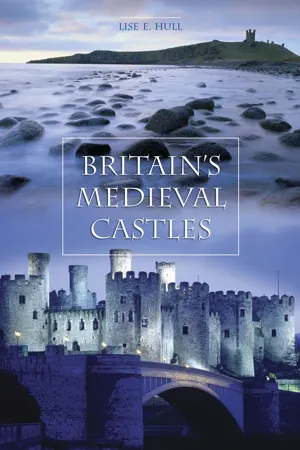
- 248 pages
- English
- PDF
- Available on iOS & Android
Britain's Medieval Castles
About This Book
The widespread construction of castles in Britain began as soon as Duke William of Normandy set foot on the shores of southern England in 1066. The castles that were constructed in the ensuing centuries, and whose ruins still scatter the British countryside today, provide us with an enduring record of the needs and ambitions of the times. But the essence of the medieval castle—a structure that is equal parts military, residential, and symbolic—reveals itself not only through the grandeur of such architectural masterpieces as the Tower of London, and the imposing nature of such royal residences as Windsor, but also in the aging masonry carvings, enduring battlements, and more modest earthen ramparts that have survived alongside them. Through a feature-by-feature account of the architectural elements and techniques used in constructing the medieval castle, author Lise Hull allows the multiple functions of these multifarious forms to shine through, and in so doing, lends a new vitality to the thousand faces that the medieval world assumed to discourage its enemies, inspire its friends, and control its subjects. This compelling investigation takes a unique look at each of the medieval castle's main roles: as an offensive presentation and defensive fortification, as a residential and administrative building, and as a symbolic structure demonstrating the status of its owner. Each chapter focuses on one specific role and uses concrete architectural features to demonstrate that aspect of the medieval castle in Britain. A wealth of illustrations is also provided, as is a glossary explaining the distinct parts of the castle and their functions. This book should be of interest to students researching architecture, the Middle Ages, or military history, as well as general readers interested in castles or considering a trip to Britain to observe some of these magnificent sites themselves.
Frequently asked questions
Table of contents
- Contents
- Illustrations
- Acknowledgments
- Introduction: What Is a Castle?
- CHAPTER 1 Castles as Offensive Weapons
- CHAPTER 2 Castles as Defensive Strongholds
- CHAPTER 3 Castles as Residences
- CHAPTER 4 Castles as Status Symbols
- CHAPTER 5 Raglan Castle: A Properly Fortified Military Residence
- CHAPTER 6 What Is a Castle? Revisited
- Epilogue
- Notes
- Glossary
- Bibliography
- Index